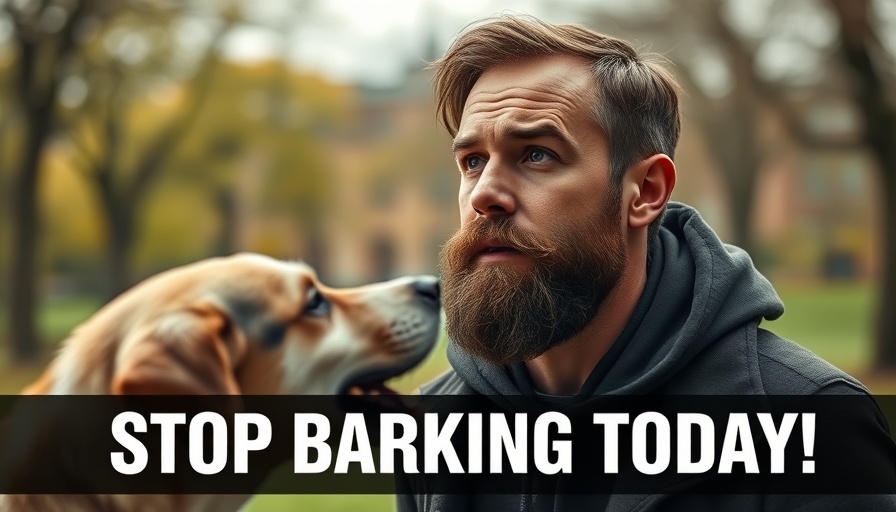
Understanding Reactive Behavior in Dogs
In the journey of transforming a dog's extreme reactivity into calm behavior, recognizing the root causes of such behavioral issues is crucial. From the video 'This Dog Wouldn’t STOP Barking… So I Stepped In to Help,' we learn about a dog who struggles with heightened responses to people and other dogs. The owners faced challenges, especially in crowded environments like coffee shops, where their dog's barking and anxiety would escalate rapidly. Reactive behaviors often stem from past experiences that shape a dog's perceptions, and understanding these triggers is the first step in modifying unwanted actions.
In 'This Dog Wouldn’t STOP Barking… So I Stepped In to Help', the discussion dives into dog reactivity, exploring key insights that sparked deeper analysis on our end.
The Importance of Communication
A significant takeaway from the transformational journey is the importance of communication between dog and owner. The video's trainer emphasizes the need for clear signals to the dog, conveying that certain behaviors aren’t necessary. This not only builds the dog's confidence but also strengthens the bond between the dog and its owner. By redirecting the dog's focus from external stimuli to positive interactions with their human, owners can mitigate reactivity while creating an environment where the dog feels safe and understood.
Training Techniques: Finding What Works
While many pet owners resort to treats to distract their dogs from triggers, as shown in the video, the results can be mixed. The featured trainer points out that often, this method does not adequately address the root of the problem. Implementing alternative techniques, such as clear commands and structured training, can provide deeper, lasting changes. By establishing defined roles and expectations, dogs can better understand what behaviors are acceptable, leading to less anxiety and a more enjoyable outing for both dog and owner.
Encouraging Calmness Through Positive Reinforcement
As we've seen in the video, one effective way to transform reactive behavior is through positive reinforcement. Instead of applying pressure when the dog exhibits unwanted actions, rewarding calm behavior reinforces the desired state of being. This involves encouraging the dog with praise and treats when it displays relaxed demeanor, contributing to a positive cycle of behavior modification. Over time, this can help the dog associate crowded places like coffee shops with feelings of safety and calm.
The Owner's Role in Consistency
Perhaps the most challenging part of the training process lies in the owner's consistency. Following the trainer’s guidance, it's vital for owners to replicate successful strategies at home and in various environments. The trainer openly acknowledges that while some owners might struggle, perseverance is key. Equipping owners with simple yet effective strategies empowers them to handle their dogs' behaviors long-term.
Community Support and Resources
For dog owners navigating these challenges, seeking community support can be immensely beneficial. There are numerous resources, including training classes and online forums, where pet lovers can share experiences and solutions. Engaging with others who face similar hurdles can provide emotional support and practical insights. Remember, the journey toward a well-behaved pet is a collaborative effort, often filled with trials, errors, and triumphs.
In conclusion, transforming reactive behaviors in dogs involves understanding their triggers, establishing clear communication, and remaining consistent in training practices. If you're a pet lover passionate about enhancing your dog's well-being, this journey can also lead to a deeper bond between you and your furry companion. Embrace the process, celebrate the small victories, and remember: change takes time. Take a proactive step today—engage with your local dog training community to explore resources and support to guide you on this rewarding journey.
 Add Row
Add Row  Add
Add 




 Add Row
Add Row  Add
Add 

Write A Comment